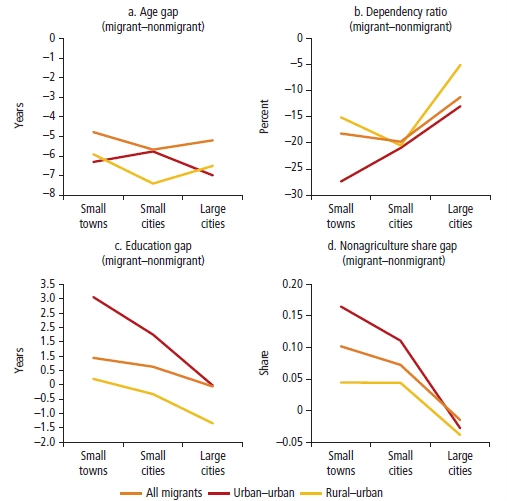This blog was originally published by The World Bank
The challenges of international migration continue to top the headlines. Yet, the number of internal migrants—between rural and urban areas, between towns and cities—is multiple times larger.
Mayors are often equally concerned about the pressures migrants may pose on their cities’ labor markets as well as their already stretched infrastructure and social services, especially in lower-income countries.
But should they be? Surprisingly, little systematic evidence exists. A new report, Migrants, Markets, and Mayors: Rising above the Employment Challenge in Africa’s Secondary Cities, helps shed some light.
The findings prove intuitive, even if not necessarily conventional. For example, the report shows that Africa’s urban population growth is increasingly driven by natural population growth, not rural-urban migration, especially in towns and outside East Africa. This could change how mayors perceive and tackle the challenges of rapid urban growth.
The report also calls attention to Africa’s rapidly growing number of towns and secondary cities, where three in five urban citizens reside. Finally, the study goes beyond the traditional focus on rural-urban migration to include movements between towns and cities. Taking this broader perspective, the following insights emerge.
Urban migrants are non-negligible in number, younger, and often better educated than urban non-migrants.
Urban migrants tend to be younger, have fewer dependents, and are on average more educated than urban non-migrants, thereby strengthening the urban labor force.
Importantly, these differences are larger for people who migrate between urban areas, and these differences decline as city size increases (Figure 1). Migrants are also more likely to work in nonagricultural sectors than urban non-migrants, especially in towns, where agriculture remains a significant source of urban employment in Sub-Saharan Africa, employing between 13 and 25 percent of the non-migrant population.
Figure 1: Differences in Socioeconomic Characteristics Between Migrants and Non-Migrants.

Urban migrants perform similarly or better in urban labor markets than urban non-migrants
Contrary to conventional wisdom, migrants integrate well into urban labor markets, irrespective of their duration of stay, especially migrants who move to towns and secondary cities. They enjoy mostly similar (if not higher) levels of welfare compared to non-migrants. People who migrate from urban areas to towns tend to do best—they are more likely to be employed, work more hours, and enjoy a wage premium relative to non-migrants. This results in higher incomes and consumption, mainly because of higher educational outcomes and the choice of moving to more economically vibrant towns. People who migrate from rural areas to towns tend to be at least as well off as town non-migrants, being more likely to be employed and working more hours, albeit at a wage discount.
Migrants who move from rural areas to cities in East Africa might come closest to the popular notion that urban migrant dwellers mostly join the ranks of the unemployed, though the findings are not readily generalizable across countries. When controlling for human capital, occupation, and location, the lower labor market performance of rural-city migrants does not carry over to their consumption, meaning they purchase goods and services at similar levels to city non-migrants.
These findings from nationally representative econometric household survey analyses are supported by the insights from four cities (Jijiga in Ethiopia, Jinja in Uganda, and Jendouba and Kairouan in Tunisia). Early empirical evidence also supports the notion that migrants positively contribute to urban labor productivity and welfare, mainly by increasing urban density. Yet, qualitative studies point to discrimination against female migrants. For example, in Tunisia, factories prefer to hire single women unburdened by family duties.
How can mayors capture the benefits of migration?
Overall, migrants can positively benefit urban development, especially in secondary towns and cities. To do so, policies must look beyond labor market policies and migrants, and focus instead on how cities are planned and managed more broadly. It requires more information about migratory flows, less red tape for businesses, and better planning to provide the necessary urban infrastructure, services, and jobs.
National governments can help mayors respond through stronger finances and capacities, while mayors can also take steps to foster better citizen engagement. Interventions targeting migrants are recommended when divisions are strong, through actions that improve living standards for all. Together, these measures can help migration and urbanization go hand-in-hand to generate more good jobs for all.





